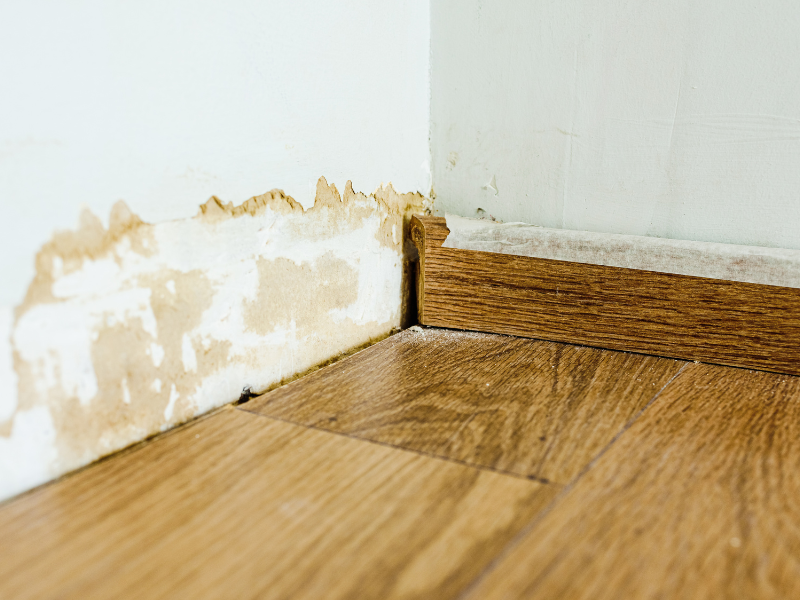
29 Jul Stains on parquet due to moisture: causes, prevention and solutions
Parquet flooring is synonymous with warmth and elegance, but it’s also one of the most sensitive surfaces when it comes to moisture. Stains on parquet caused by moisture not only ruin its aesthetic appeal but can compromise the structure of the floor and become a source of mold and unpleasant odors. Detecting them and acting in time is key to avoiding major damage and costly repairs.
Contenidos
Moisture stains appear on parquet
The appearance of moisture stains on parquet depends on different factors and can be due to several causes. The main ones include:
- Leaks and seepage: One of the most common causes of stains is water leakage. Damaged pipes, facade leaks or roof seepage can end up affecting the floor, especially in ground floors or basements.
- Capillarity and poor waterproofing: When the base of the floor does not have proper waterproofing, ground moisture rises by capillarity. This problem is frequent in old houses or poorly insulated buildings.
- Condensation and poor ventilation: Lack of ventilation in damp rooms such as bathrooms or basements promotes condensation and the appearance of moisture stains and mold on parquet, especially in corners or hidden areas.
How to identify parquet moisture stains
At first glance, the stains may seem harmless, but they are usually a warning sign of a bigger problem. The first signs are color changes (darker or grayish areas) and a dull appearance. If the problem progresses, the wood can warp, lift or emit a persistent musty smell.
A clear warning sign is when the planks deform and begin to detach completely due to constant moisture infiltration.
What to do if you find moisture stains on parquet?
First of all, don’t just focus on the surface. Cleaning the stain is useless if the root cause is not solved.
Basic steps to act correctly:
- Detect the cause: check pipes, walls and drainage systems. If you can’t find the leak, get professional help.
- Dry the area: good ventilation and removing affected boards can help eliminate accumulated moisture.
- Assess the repair: for superficial stains, sanding and varnishing may be enough. If the wood is deeply damaged, it’s best to replace it.
- Apply preventive treatments: waterproofing the base and improving ventilation will prevent moisture from reappearing.
Avoiding moisture stains on parquet is possible if you follow some key recommendations:
- Regular maintenance: check plumbing and ensure there are no leaks.
- Proper waterproofing: essential for ground floors, basements or homes near damp areas.
- Constant ventilation: open doors and windows to renew air and reduce condensation.
- Immediate clean-up: wipe up any spilled liquid immediately to prevent it from seeping into the wood.
Have a professional diagnosis
Many homeowners try to fix the problem on their own, but if it’s not handled correctly, moisture can spread and weaken not only the floor but also the walls and foundations.
A professional team doesn’t just clean the stain; they offer waterproofing, drainage and damp-proofing solutions that tackle the real cause of the issue.
At Humilogic we specialize in detecting and solving moisture problems effectively and permanently. If you’ve noticed moisture stains on parquet or suspect you may have leaks, don’t wait. Our team analyzes each case and designs a customized plan to restore the health of your floor and protect your home’s structure.
Contact us today and forget about moisture for good.
